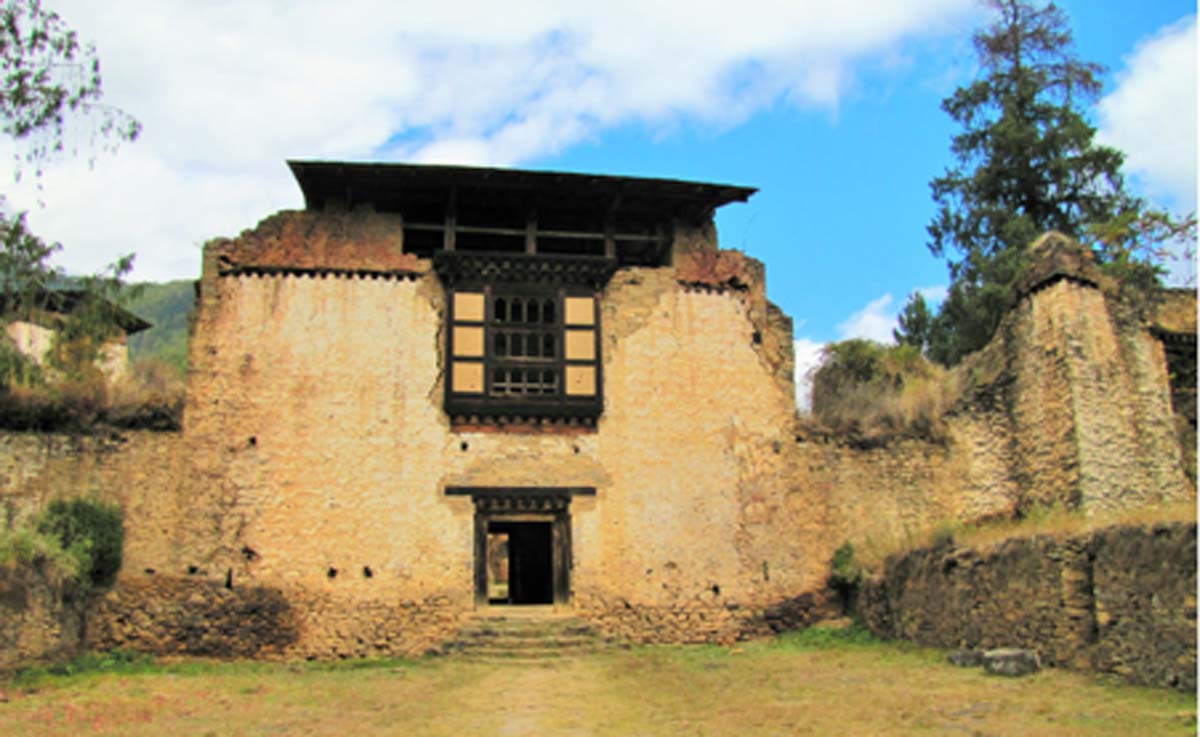Drukgyel Dzong and How a Lama Unified Bhutan
Bhutan is a Himalayan kingdom with a rich history and a distinctive Buddhist culture. It has barely been impacted by modernity and globalization, and has managed to largely preserve its ancient culture. Perhaps the best-known historic site in the country is the ruined complex of Drukgyel Dzong. The Bhutanese government has applied for the site to be recognized as a UNESCO World Heritage Site.
The History of Drukgyel Dzong
Drukgyel Dzong was built in 1649 to protect the area and also to serve as a religious center when the Dzong area was of great strategic importance. The Drukpa-Kagyud Buddhist School was built by the head, Zhabdrung Ngawang Namgyal, often known as the Bearded Lama, who had fled from Tibet.
Ngawang Namgyal and his followers built several other Dzongs to control the wild mountainous region of Bhutan and in 1634 he unified what is now the Kingdom of Bhutan after his great victory in the Battle of the Five Lamas. Prior to this time much of the country was in the hands of Buddhist monastic orders and feudal lords.

Punakha Dzong, the Queen of Dzongs constructed by Ngawang Namgyal, 1637. (UlyssePixel/ Adobe Stock)
The fortress of Drukgyel Dzong commemorated a great Bhutanese victory over the Tibetans and Mongolians. Zhabdrung Ngawang Namgyal designed it to protect Bhutan’s border with Tibet by incorporating a large arsenal and also administrative buildings.

Interior of Drukgyel Dzong, Bhutan (Betty Sederquist/ Adobe Stock)
Drukgyel Dzong was regularly attacked in the 17 th and 18 th century and the fortress was in continuous use until it was destroyed by fire in the early 1950s. The ruins are regarded as a national monument and are a source of pride to the Bhutanese. In 2016 the Prime Minister declared that the Dzong would be rebuilt and restored to its former glory.
A description of the ruins of Drukgyel Dzong
Despite being gutted by fire in 1951, Drukgyel Dzong is quite well-preserved. As with other similar buildings, it was constructed from timber and stone, but all the wooden structures are long gone. The impressive packed-earth ramparts and the walls are still standing.
- Paro Taktsang: The Breathtaking Himalayan Cloud Monastery
- The Beauty of Death, Dying and Rebirth in Tibetan Buddhist Rituals
- Tibet's Valley of the Kings: What Hidden Treasures Lie Within This Imperial Tibetan Graveyard?

Drukgyel Dzong and the Himalayas - Kingdom of Bhutan. (mrallen/ Adobe Stock)
A pathway leads to up to the rocky hill where the fortress is located, flanked by small towers which once protected the entrance. These towers are known as ‘watching forts’. The centerpiece of the Drukgyel Dzong is a central tower, which houses a shrine to gods. There are also a number of round towers in the fort that are joined by walled pathways and the whole complex is an impressive piece of military architecture.
There are a number of rectangular buildings that surround the courtyards. The fortress follows the lines of the hill which gives it a unique and impressive design. The many passageways in and around the fortress were used to fetch water from a nearby river. They were also used for stocking supplies and to reinforce the garrison with fresh troops during sieges. In recent years, the passageways have been sealed.
Unlike other Dzongs, there are no quarters for monks or monastic buildings. However, there is a prayer wheel, some Buddhist stupas, and a prayer yard where visiting monks once prayed.
The ruins of Dzong give a good idea of what these unique Bhutanese buildings were like in the past since the fortress was not rebuilt and adapted to modern purposes after it was destroyed by fire.

Drukgyel Dzong, Bhutan Betty Sederquist / Adobe Stock
The Journey to Drukgyel Dzong
The ruins are located on the upper the Paro Valley, about 8.7 miles (14 km) from Paro. There is accommodation to be found in Paro, including a hostel. The site can be accessed by bus or it is possible to hire a car. Sadly, because of the condition of the ruins, it is not possible to enter the old Dzong. However, it is possible to walk around the walls and to inspect some of the ruins such as the watchtowers. The ruins are set in some spectacular mountains and they are also the start of several mountain trails which are very popular with hikers.
Top image: Drukgyel Dzong, Bhutan Source: Chuck Moravec / CC BY 2.0
By Ed Whelan
References
Amundsen, I. B. (2001). On Bhutanese and Tibetan Dzongs
Available at: https://www.repository.cam.ac.uk/bitstream/handle/1810/227052/JBS_05_02.pdf?sequence=2
Harrison, P. (2012). Fortress Monasteries of the Himalayas: Tibet, Ladakh, Nepal, and Bhutan. Bloomsbury Publishing
Phuntsho, K. (2013). The history of Bhutan. Random House India



















